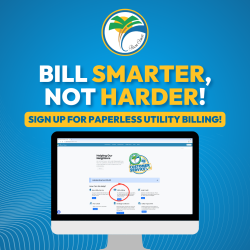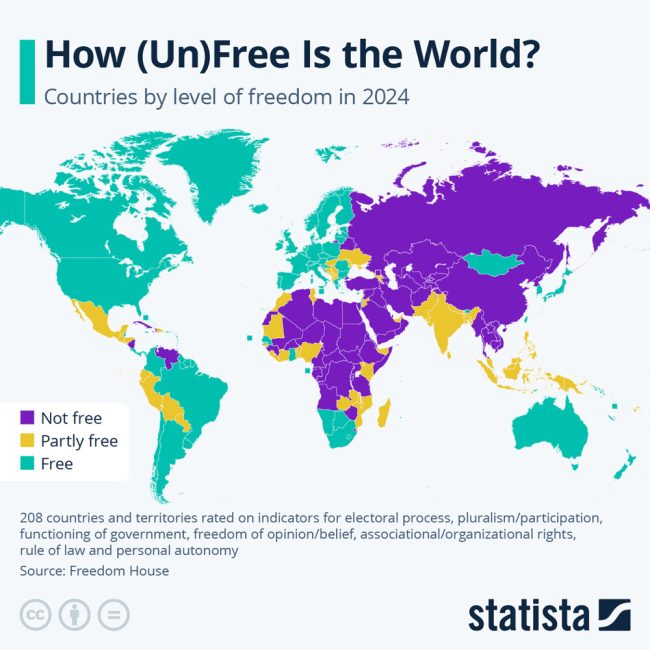
To include your event in the Briefing and Live Calendar, please fill out this form.
Weather: Mostly sunny, with a high near 74.
- Daily weather briefing from the National Weather Service in Jacksonville here.
- Drought conditions here. (What is the Keetch-Byram drought index?).
- Check today’s tides in Daytona Beach (a few minutes off from Flagler Beach) here.
- Tropical cyclone activity here, and even more details here.
Today at a Glance:
Municipal Elections in Flagler Beach and Bunnell, polls open at 7 a.m., close at 7 p.m. Two incumbents and a third candidate are running for two seats in Flagler Beach. Five candidates are running for two open seats in Bunnell. Flagler Beach voters may cast ballots at Flagler Beach City Hall, 105 S. 2nd Street. Bunnell voters may cast ballots at the G.W. Carver Center Gym, 201 E. Drain Street, Bunnell. See sample ballots and additional information on the two elections at the Supervisor of Elections’ web page here.
Flagler Beach’s Planning and Architectural Review Board meets at 5:30 p.m. at City Hall, 105 S 2nd Street. For agendas and minutes, go here.
The Flagler Beach Library Writers’ Club meets at 5 p.m. at the library, 315 South Seventh Street, Flagler Beach.
The Bunnell Planning, Zoning and Appeals Board meets at 6 p.m. at the Government Services Building, 1769 East Moody Boulevard, Bunnell. The board consists of Carl Lilavois, Chair; Manuel Madaleno, Nealon Joseph, Gary Masten and Lyn Lafferty.
The Palm Coast City Council meets at 6 p.m. at City Hall. For agendas, minutes, and audio access to the meetings, go here. For meeting agendas, audio and video, go here.
Rally in support of Ukraine, 5 to 6 p.m. simultaneously at two locations: Island Walk on Palm Coast Parkway, and on State Road 100 along the Target shopping center. The rally is organized by local Democrats.
Random Acts of Insanity Standup Comedy, 8 p.m. at Cinematique Theater, 242 South Beach Street, Daytona Beach. General admission is $8.50. Every Tuesday and on the first Saturday of every month the Random Acts of Insanity Comedy Improv Troupe specializes in performing fast-paced improvised comedy.
Notably: Our sad, annual notice from Statista: “Global freedom declined for the 19th consecutive year in 2024, according to the Global Freedom Index by democratic watchdog organization Freedom House, released Wednesday. Analysts found that 60 countries have experienced a deterioration in their political and civil liberties since 2023, while 34 saw improvements. El Salvador, Haiti, Kuwait and Tunisia saw their scores drop the furthest compared to last year, while Bangladesh, Bhutan, Sri Lanka and Syria saw the biggest gains. In a major year for elections, violence affected 27 of the 66 countries and territories studied in the report where ballots were held last year, including attacks on candidates. In Mexico and South Africa, such assaults were largely at the hands of criminal groups seeking to gain political influence and control of territory. In countries such as France, Japan, South Korea, the United Kingdom and the United States, extremism or partisan stances drove attacks on individuals running for office. India has seen a decline of 15 points in the past decade. Between 2023 and 2024 it slid three points and was placed in the category of “partly free”. Meanwhile, Indian Kashmir saw an increase of 12 points year on year due largely to its return of elections, lifting it from the “not free” group to the “partly free” group. Freedoms and security also continued to be hampered by ongoing armed conflicts. Freedom House notes how civil wars, clashes between states, and fighting that involved non-state armed groups have hit local civilian populations in places around the world and have had a negative ripple effect, including fuelling the spread of illicit trades. The Freedom in the World Index is an index compiled annually by the U.S. NGO Freedom House, which evaluates civil and political freedom in states and territories around the world. The methodology is based on the Declaration of Human Rights as proclaimed by the United Nations (UN) in 1948 and is intended to assess the political rights and civil liberties of individuals rather than governments.”
View this profile on Instagram
![]()
The Live Calendar is a compendium of local and regional political, civic and cultural events. You can input your own calendar events directly onto the site as you wish them to appear (pending approval of course). To include your event in the Live Calendar, please fill out this form.
December 2025
Free For All Fridays With Host David Ayres on WNZF
Friday Blue Forum
Rotary’s Fantasy Lights Festival in Palm Coast’s Town Center
The Bronx Wanderers at the Fitzgerald Performing Arts Center
‘Annie,’ at Limelight Theatre
Irving Berlin’s Holiday Inn
‘Greetings,’ A Christmas Comedy
Santa in Bunnell
Flagler Beach Farmers Market
Coffee With Flagler Beach Commission Chair Scott Spradley
Grace Community Food Pantry on Education Way
Second Saturday Plant Sale at Washington Oaks Gardens State Park
American Association of University Women (AAUW) Meeting
Peps Art Walk Near Beachfront Grille
Gamble Jam at Gamble Rogers Memorial State Recreation Area
For the full calendar, go here.

More ominously, future tragedies were clearly in the making, for tens of millions of Germans did not believe their country had actually lost the war. For more than four years of fighting, the German military had imposed tight censorship, and even in the last months of combat, the country’s press remained relentlessly upbeat. The apparent German retreat? Merely a temporary temporary setback. As late as a few weeks before the Armistice, Germany’s newspapers were still running stories about an imminent final victory. This illusion was all the easier to believe because, to the very end, almost all the combat took place on foreign soil.
–From Adam Hochschild’s American Midnight: The Great War, a Violent Peace, and Democracy’s Forgotten Crisis (2022).












































Ray W, says
Target’s CEO told an interviewer that today’s implementation of the 25% tariff on Mexican products, due to short transport timeframes in the supply line of perishable food products such as avocados, bananas, tomatoes, etc., should result in the beginning of a rise in perishable food products within a week.
Just how much is the question.
Mexico’s president announced that her nation would respond by this weekend with targeted tariffs on American products.
Just which products and how much is the question.
Canada and China have already announced plans for their own retaliatory tariffs. A Canadian provincial premier is on record as saying that his province will immediately cut $10 billion in existing contracts with American producers.
Make of this what you will.
Me?
Perhaps produce prices at the grocery store will indeed soon begin to rise. I have long said that I cannot predict the future. I am not an economist. Neither am I a grocer. But I am a curious student who learned long ago to not listen to the professional lying class of any political party.
If a price rise begins to happen by next week, as Target’s CEO asserts, how will the rise manifest itself?
Grocers may not pass on all of the tariff costs to the consumer. They might absorb some of the cost, thinking the tariffs will be short-lived.
There are other possible strategies. Loss leading has been an advertising choice in the grocery industry for decades, so some companies might increase prices in other departments to mask the price shock in the produce department, market share being as important as it is.
The Super Bowl is behind us, so a rise in the price of avocados next week, however slight, timing being as important as it is, might be less shocking to consumers than it would have been had conversation at Super Bowl parties drifted to a rise in avocado prices.
If produce department prices rise on the more perishable products on display, the more gullibly stupid FlaglerLive commenters among us will blame the Biden administration for the rise, however small it might be, as they always have done. They will be wrong, as they so often are.
But consider this.
Just because America has a nationwide crude oil pipeline network doesn’t mean the network supplies crude oil to every refinery in the U.S. A number of American refineries receive all of their crude oil from Canada. If Canadian oil costs 10% more, can rail service make up the difference? Shipping oil by rail is some three times more expensive than pipeline transport. Will consumers in areas serviced by certain refineries see a regional rise in gasoline prices. Nearly 100% of the gasoline and diesel fuel in New England comes from Canadian refineries. How will those consumers adjust to suddenly higher prices at the pump. Will they begin driving to Canada, should they live close enough to the border, to purchase cheaper gas and diesel fuel?
The same goes for natural gas. The extensive natural gas pipeline network does not service every region in America. Mexican and Canadian pipelines service natural gas needs in many border regions.
As an aside, Russian commenters are applauding the Trump administration’s decision to cut off military supplies to the Ukraine.
Just another day in the Great Russian Appeasement of 2025.
Sherry says
Thank you Ray!
Everyone please watch as Prime Minister of Canada, Justin Trudeau makes a critically important speech which starts off speaking directly to the people of the USA:
Pogo says
@Spoilers
… what was MORE important — BEFORE the mob chose trump?
Ray W, says
Some three months ago, Popular Mechanics published an article about ProLogium developing a new kind of EV battery.
Here are a few bullet points from the story:
– Right now, there are an estimated one billion gas powered motor vehicles in operation all over the world.
– The new ProLogium battery is comparatively energy dense, rated at 321 watts of power per kilogram. Standard liquid-state lithium-ion batteries (LiB) ranging up to 300 watts per kilogram, but the better performing of the LiBs are rare right now. Most LiBs top out at around 250 watts per kilogram.
– The new ProLogium battery charges comparatively rapidly, at 186 miles of range (300 km) in five minutes, charging to 60% of capacity in that time. Charging to 80% of capacity takes 8.5 minutes. Many LiBs charge to 60% in 30 minutes.
– ProLogium estimates that its power-dense battery allows engineers to cut 661 pounds (300 kg) from a vehicle’s overall weight should the company want range to be comparable to current LiB range, but if a company wants to offer a car with greater battery power, it can keep weight the same and offer significantly increased range.
– ProLogium claims that their battery technology, being modular, easier service, easier repair, and faster replacement.
– So what is this new type of battery? ProLogium says it is a unique form of solid-state lithium-ion battery that has ceramic-based electrolyte and a silicon-composite anode. The battery was unveiled at the 2024 Paris Motor Show in October 2024.
– The ProLogium battery is expected to debut in a production vehicle in 2027.
Make of this what you will.
Me?
Given the number of metals and compounds that can comprise an electric vehicle battery, there are thousands of permutations available to chemists to power the vehicles of the future. Company after company feverishly work to provide the most energy-dense battery pack per dollar. Right now it looks like sodium-ion batteries offer the most cost-efficient package, but the future beckons. Graphene-aluminum-ion batteries offer the longest lifespan and perhaps the greatest energy efficiency, but the cost now is prohibitive, though rapidly dropping.
I saved this article three months ago. I have dozens more saved, each espousing new breakthroughs in battery chemistry. They are coming in faster than I can comment.
ICE-powered vehicles are nearing the end of their development envelope, with tiny incremental gains obtained after the expenditure of significant sums of money. Ford’s CEO asserts that battery and electric motor technology is at the Model T stage of development. Electric cars are already at the point that they are cheaper to manufacture, cheaper to buy, cheaper to drive, cheaper to insure, cheaper to repair, cheaper to maintain, and they are longer lasting.
ICE vehicles are the past. EVs are the future. There are a billion gas-guzzling vehicles out there to be replaced. Americans stupidly listened to lies emanating from the professional lying class of one of our two parties. Because they listened to the lies, we ceded the EV industry to the Chinese. Ford’s CEO says we are 10 years behind the Chinese and that without Biden’s 100% tariff on Chinese EVs that American automobile industry would be facing an “extinction level event.”
Flagler County did not succeed in its effort to lure a French aircraft manufacturer to build an electric regional-class commuter plane, but make no mistake, the planes are coming to America.
A regional-class airplane that carries 16 passengers and three crew means that any airport can offer inexpensive flights that avoid Dallas and Orlando and Atlanta and Chicago. An electric commuter plane might be cost-competitive by avoiding the major hubs. Simply recharge in 30 minutes and fly again. With eight electric motors, if one fails the plane can still fly to a destination. Want to fly to Asheville without stopping enroute in Atlanta? Such a future seems possible.
Jahovah-ville reject says
The Democrats may have lost their voice.
But one thing I am certain of is that the Republicans have not. Considering how much talking they did over the weekend to try to “spin” that Trump-Zelensky oval office disaster.
I can’t imagine anyone buying what they’re selling, except perhaps our own two magaphiles, Wrathsam and DimbulbXYZ.
Another example of “sane washing” Trump’s (and now Vance’s) off-the-wall behavior I suppose.
Is it “sweeps week?”
One can only guess at what will transpire tonight, but it’ll make “great” TV.
Just an opinion.
Sherry says
Published in Canada this morning:
The president (trump) lacks basic decency, and loathes people who do Paul Krugman
Mar 4
Trade policy mavens sometimes use numeric shorthand that refers to relevant parts of the Trade Act of 1974, which spells out situations in which the president has the right to impose tariffs. There’s Section 201, giving temporary relief to an industry that is being hurt by an import surge. There’s Section 232, protecting an industry vital to national security. There’s Section 301, responding to subsidies or other practices that give foreign producers an unfair advantage.
The tariffs Donald Trump just imposed on Canada and Mexico — nations with whom he himself signed a free trade agreement — don’t fit any of these categories. Maybe they’re Section 000, meaning that the president has simply lost his mind. Or maybe they’re Section 666: he’s just evil.
The newspapers this morning all contain analysis pieces trying to explain why Trump is imposing 25 percent tariffs on Canada and Mexico. You can see the writers struggling, because this is a profoundly self-destructive move — it will impose huge, possibly devastating costs on U.S. manufacturing, while significantly raising the cost of living — without any visible justification. Yet the conventions of mainstream journalism make it hard to say directly that the president’s actions are just vindictive and senseless.
To its credit, the New York Times analysis comes closest, acknowledging that for some reason Trump personally loathes Canada, a nation most of the world stereotypes as “nice.” Obviously not every Canadian is a nice person. But Canadians are relatively courteous on average, and the country’s social and economic policies are relatively decent by international standards.
And it seems clear to me that Trump hates them for their decency.
To be fair, there are some efforts to explain what’s happening that go beyond Trump’s personal pathology. Some Canadians think Trump covets their mineral wealth. And there’s always the possibility that Trump knows how big Canada looks on standard maps, unaware both of the way that its land area is exaggerated by the Mercator projection and the fact that much of it is tundra, and thinks, “Real estate!”
Trump also goes on about Canada’s trade surplus with the United States, which he keeps saying is $200 billion a year — it’s actually less than a third that size. And nobody has offered a coherent justification for his claim that when Canada sells us cheap oil and electricity, we are somehow subsidizing them.
In any case, efforts to find some kind of economic justification for Trump’s Canada-hatred have the feeling of desperate efforts to avoid the obvious. Canada is a pretty decent place, as nations go. And Trump, whom nobody would describe as a decent person, dislikes and maybe even fears people who are.
I mean, look at the people Trump has chosen to play prominent roles in his administration. I guess if you search hard enough you can find officials without a sex scandal, a financial scandal, a history of anti-semitism or racism, or a record of substance abuse in a senior position. But it isn’t easy. It really looks as if being vile is a fundamental job qualification.
And so we’re having a trade war. Trump appears to believe that we don’t need anything from Canada. Automobile manufacturers who rely on Canadian parts, Midwestern oil refineries that rely on Canadian oil, builders who rely on Canadian lumber, households that rely on Canadian hydropower for their electricity will soon learn otherwise.
Trump may imagine that he can bully Canada into submission. But he can’t; Canadians of all political persuasions are furious. Doug Ford, the conservative premier of Ontario, has the right attitude: he has threatened to cut off U.S. electricity “with a smile on my face.” And remember that Canada can’t concede to U.S. demands, even if it were in a mood to do so (which it very much isn’t) because there aren’t any coherent U.S. demands; Canada has done nothing wrong!
So I don’t know how this ends. But U.S. voters will soon be feeling real pain, and I very much doubt that it will end in a Trump victory.
Ray W, says
Euronews (English) just published a very interesting article about the world’s dominant Chinese EV manufacturer, BYD, on two different points.
To establish context, the reporter noted that there are roughly one billion ICE vehicles right now on the world’s roadways.
First, a senior BYD executive told a Financial Times reporter that BYD was in talks to begin collaboration with Tesla on both EV and self-driving technology. She said: “Our common enemy is the internal combustion engine car. We need to work together … to make the industry change.”
She added that BYD was willing to share its technology with other companies to achieve this goal. She did not say that BYD was looking for or even wanted Tesla’s battery technology.
There may be a reason for this position. A number of months ago, it was widely reported across the automotive press that Elon Musk had met with BYD’s main battery competitor, CATL, to discuss possible collaboration. CATL’s CEO reportedly told Musk that Tesla’s latest battery would never work, because Tesla’s battery design and chemistry were outdated before it was released. The CEO told the reporter that he thought Musk was brilliant in many areas, but that he didn’t know anything about the next generation of EV batteries.
Both BYD and CATL are betting that lithium-ferrous-phosphate (LFP) batteries are the immediate future and that liquid-state lithium-ion batteries (LiBs) are obsolete. Tesla has bet the farm on LiBs, spending billions on developing the technology and building factories to produce battery packs. LFP batteries offer better cooling properties and a higher energy density. Increasing energy density means a greater range per battery pound.
But there are other important differences between BYD’s LFP battery and Tesla’s LiB.
LFP batteries are cheaper and less toxic to build, they hold a charge over a larger number of battery cycles, and they are less toxic to recycle.
Tesla uses a relatively common industry standard manufacturing method that uses thousands of individual battery cells per pack. It wires individual cells into a 22-cell “series.” It then wires a number of series into “modules”. It then wires the modules into complete battery packs. A truck might use up to 12 modules in a battery pack. A small car might use as few as four modules in its pack.
If an individual Tesla LiB cell fails, for whatever reason, it follows that because it is wired into a series, the series, too, might fail. If a series fails, because it is wired into a module, the module might fail. In the four-module battery pack example, the loss of single cell might lead to the loss of an entire module, which might cause a 25% loss of overall battery power.
The next generation LFP battery made by BYD, called the Blade II, does not have this possibility. Each LFP blade is wired separate from all other cells into one pack. There are no “series” or “modules” in BYD’s design. If one LFP blade cell fails for whatever reason, in a 200-blade pack, the battery loses 0.5% of its overall power. A small BEV might use a 200-blade pack, whereas a larger truck might use an 800-blade pack.
And, since the blades are rigid, they provide a battery pack that resists distortion, meaning the vehicle’s frame is stronger than a frame using a standard LiB battery pack.
In summary, BYD has a battery that is less expensive to produce, less prone to significant failure, has greater energy density per pound, offers greater rigidity to the car’s frame, and is less toxic to produce and recycle. It stands to reason that Tesla, after spending billions of dollars on obsolete technology, might go to BYD for collaboration.
The second reason for the article is that BYD just announced a share sale that raised $5.6 billion. BYD is said to be planning to use the money to expand its presence abroad.
BYD is already the world’s largest EV manufacturer, having passed Tesla last year. It has grown from producing its first electric car in 2008 to becoming the fourth largest car manufacturer the world over the last year. Ford is fifth.
BYD just moved into the South Korean car marketplace. It is rapidly gaining market share in the Australian and Mexican car marketplaces. It has a number of factories producing BEVs in Thailand and it is exporting various models from that country to a number of neighboring countries. It is building factories in Turkey, Hungary and Brazil and is considering the Indian car marketplace.
It has no announced plans to enter the American car marketplace. Former President Biden’s 100% tariff, imposed late last year, may have something to do with this. But the question has to be asked. Can BYD avoid the tariff by manufacturing cars outside of China? I don’t know, but it seems possible.
BYD just released a truck that is comparable in capability with the Ram/F-150/Silverado trio. Does BYD intend at some time in the future to compete in the light truck marketplace?
I am going to say this over and over again. For decades, many of the most gullibly stupid among us resisted electric vehicles because they listened to the lies spread by the professional lying class of one of our two political parties.
We ceded our lead in battery technology and manufacturing expertise to the Chinese decades ago. We threw away our chance to compete in the international EV marketplace. We have cost ourselves billions and billions of dollars. Ford’s CEO says America is 10 years behind the Chinese in battery technology and manufacturing expertise. Ford’s CEO openly says that allowing Chinese automakers into the American automobile marketplace without tariffs would trigger and extinction level event for the entire industry.
Chinese EVs have evolved from poorly designed and manufactured products to vehicles that are, compared to ICE vehicles, cheaper to manufacture, cheaper to sell, cheaper to drive, cheaper to insure, cheaper to maintain, cheaper to repair, and they are of comparable build quality. They last longer, too. We just threw the chance away.
ICE vehicles are the past. EVs are the future.
Ford’s CEO visited China last year. He drove a startup car company’s initial offering. Upon return to the U.S., he had one of the model’s flown to the U.S. He drove it for six months on American roads. He told a reporter that he doesn’t want to give it up. He said that driving has become fun again.
Let me pose an idea.
Dodge sells a limited-edition and very expensive ICE-powered truck with an upgraded V-8 that produces just over 600 HP. It has announced the release of an electric truck with an extended range smaller V-6 gasoline engine that has no transmission, because its purpose is to generate electricity only when battery power runs low. The dual-motor design offers 668 HP. Battery range is 140 miles. Using the generator, range extends to 690 miles.
Ray W, says
USA TODAY Network’s Louisville Courier Journal sought out and obtained an e-mail from Ontario, Canada’s Liquor Control Board of Ontario (LCBO), re: the board’s response to the imposition of tariffs on Canadian goods.
“In response to the U.S. government’s imposition of tariffs on Canadian goods, the Ontario government has directed the LCBO to immediately stop the purchase of all U.S. products, and to remove all U.S. products from LCBO retail channels and shelves, including spirits, wine, beer and ready-to-drink and nonalcoholic products.”
Last year, Kentucky businesses, including bourbon and whiskey producers, exported $9.3 billion in product to Canada.
President Chris Swonger, of the Distilled Spirits Council of the United States had previously stated last November:
“At the end of the day, tariffs on spirits products from our neighbors to the north and south are going to hurt U.S. consumers and lead to job losses across the hospitality industry just as these businesses continue their long recovery from the pandemic.”
According to Eric Gregory, President of the Kentucky Distiller’s Association, the bourbon industry enjoys sales of $9 billion in product from businesses all across the state and the industry employs 23,000 people. Kentucky distills 95% of the world’s bourbon.
President Gregory said that it’s the “corn farmers, truckers, distillery workers, barrel makers, bartenders, servers, and the communities and businesses” that will lose from Canada’s latest action, presuming that President Trump did nothing wrong in starting the trade war.
Recognizing the need to grow international markets, President Gregory said:
“Retaliatory measures against bourbon harm these markets and jeopardize growth for years to come, including the unjust and disproportionate removal of American spirits from retail shelves and prohibition on new purchases of alcohol from American companies.” In this statement, at least President Gregory admits that Trump started the trade war.
Make of this what you will.
Me?
I don’t know what will happen. Perhaps tomorrow, President Trump will fold and declare success. Maybe the tariffs will last for years. President Trump has already texted in response to Canada’s enacting retaliatory tariffs on American goods. He said the American tariffs on Canadian goods will now be doubled.
The more gullibly stupid among us will insist that Canada just bend over and take it, somehow thinking that Canadians who have been acting in accord with the terms of the trade agreement that Trump signed only six years ago are taking advantage of the U.S. They will be wrong, as they so often are. Wandering through life fooling themselves seems to be their specialty.